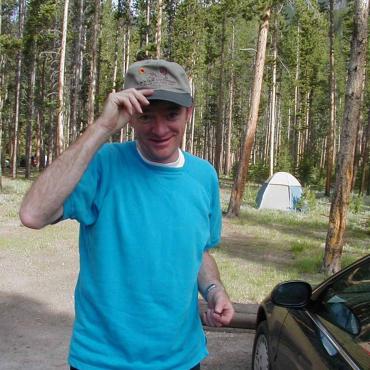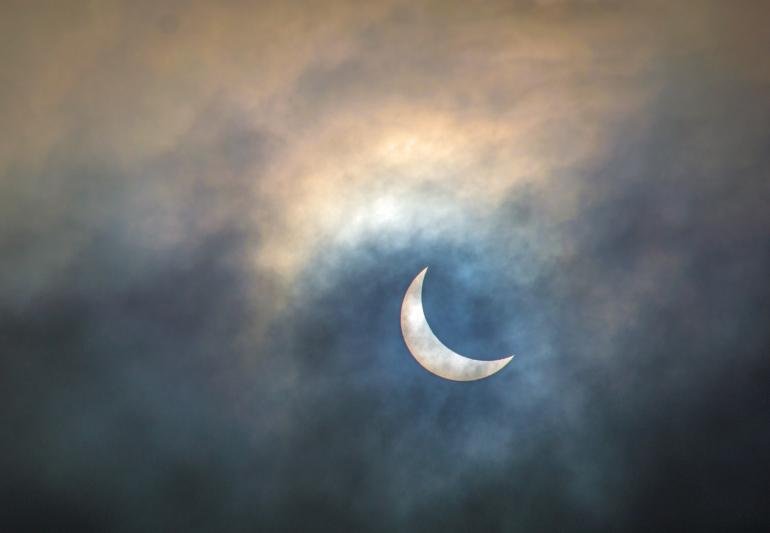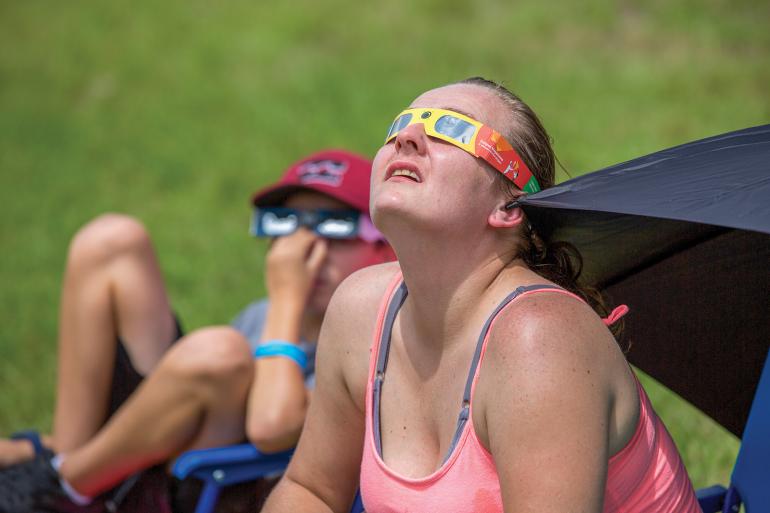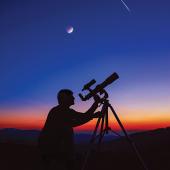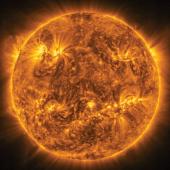Battling the Beasts
April’s solar marvels.
Last October, “the sun and moon did not meet harmoniously,” as ancient Chinese skywatchers would have said. The moon passed in front of the sun as seen along a narrow path from Oregon through Texas, but the moon was a bit too far away in its slightly-oblong orbit around the Earth to be big enough to completely cover the sun. Instead, it left a bright ring of the solar disk around its rim before moving off, creating an annular eclipse. In off-axis Montana, the moon took a big curved bite out of the sun, creating a substantial partial eclipse.
This April, the moon is back for another go. But this time, it’s closer and big enough in the sky to completely block the sun from view for up to four and a half minutes in a narrow path running from Texas to Maine, creating a glorious, brief, total eclipse of the sun. Montanans get another partial eclipse, but with the state being a little farther removed from the celestial alignment’s shadow, the bite the moon takes is smaller.
To show solidarity with our ancient ancestors, bring a pot and a large spoon to bang it, for eclipses used to be a big, scary deal.
This heavenly disharmony all happens on April 8th over the midday period when the sun is highest in the southern sky—so pack a lunch.
For Bozeman, the eclipse begins at 11:37am local time with the sun at an altitude of about 45 degrees—halfway to overhead in the southern sky. The moon tries to swallow its blazing solar prey like a giant python. It keeps going until 12:40pm at an altitude of just over 50 degrees, when it reaches maximum eclipse with about 40 percent of the sun covered by the intruding disk of the moon. Then the moon slowly moves off, completely disgorging the sun by 1:44pm. You can find a simulation of the eclipse and other particulars at timeanddate.com/eclipse.
Because the sun is never completely covered in Montana, it is never safe to look at the event at any time without specialized eye protection designed for solar viewing. And it is never safe to look at the eclipse through any optical aid without a proper solar filter. Permanent eye damage can result without the right filters. You can find safety admonitions and suggestions, including sources of safe solar viewers, at science.nasa.gov/eclipses.
Check with local museums and astronomy clubs to see if sun-safe public viewings are planned. Also check online for planned video feeds from the path of totality, where you can watch those magnificent few minutes when the moon briefly succeeds in covering the sun.
It is never safe to look at the eclipse through any optical aid without a proper solar filter.
And if you want to show solidarity with our ancient ancestors, bring a pot and a large spoon to bang it, for eclipses used to be a big, scary deal. The Aztecs, for example, feared that if the sun didn’t return, it would be dark forever and demons in that darkness would descend to consume humanity. Other cultures felt that the loss of the sun would be likewise catastrophic.
Many cultures also presumed that some great, peckish beast was snacking on the sun and needed to be scared off. Thus, many a demon, bear, wolf, jaguar, dog, bird, serpent, dragon, or whatever a particular culture favored as the villain (in parts of southeast Asia, it was an ill-intentioned frog) was sent packing by the noise made by humans below. And of course, they always succeeded, which was wonderful reinforcement. So bang away on those pots and pans!
The ever-orbiting moon will move off in any case, but we can all feel that little flutter in the breast as something in the sky becomes disharmonious with the regular order of the heavens. If the sky is clear on April 8th, enjoy the spectacle and the visceral reaction that links us to our ancestors. Just do it safely.

